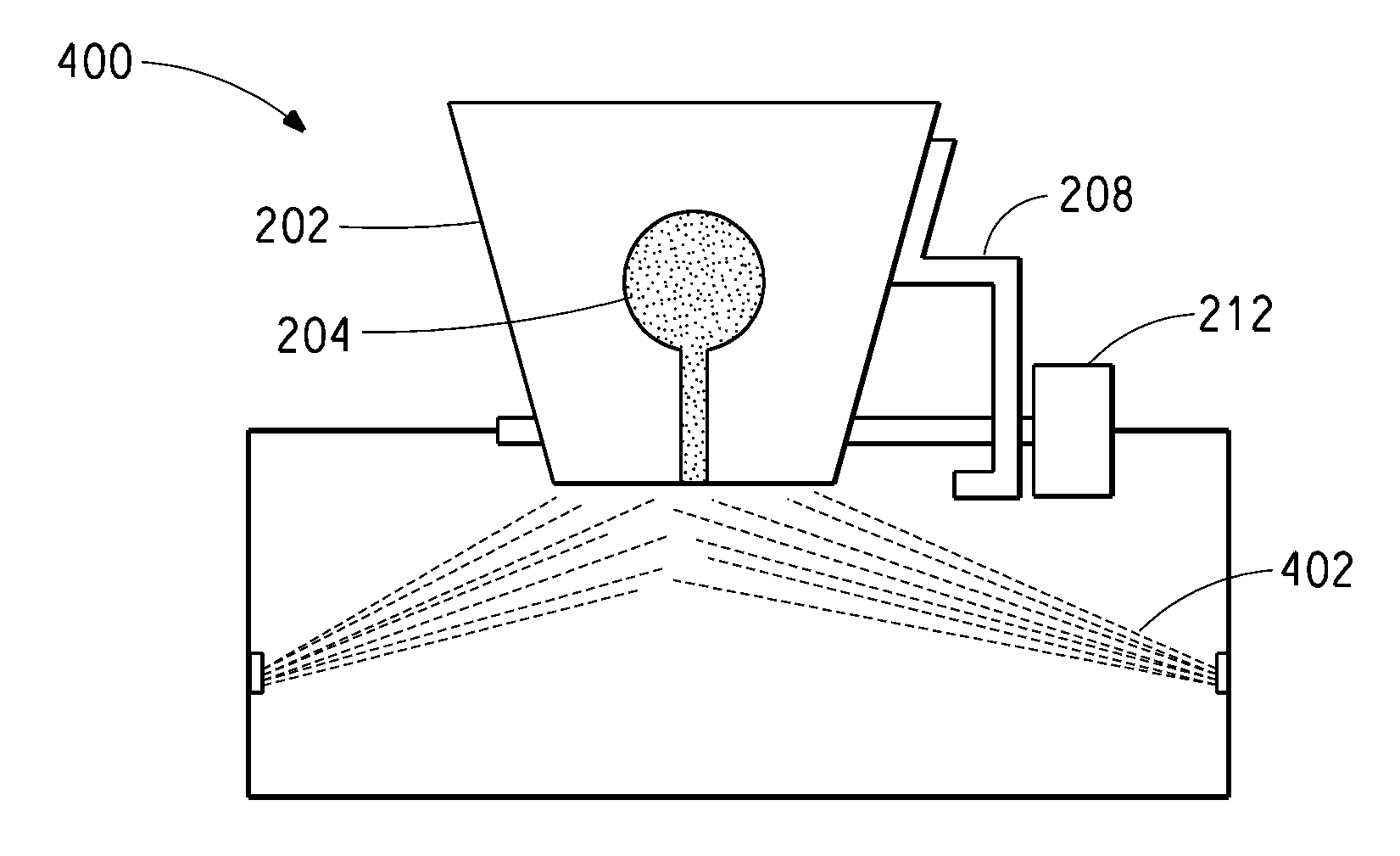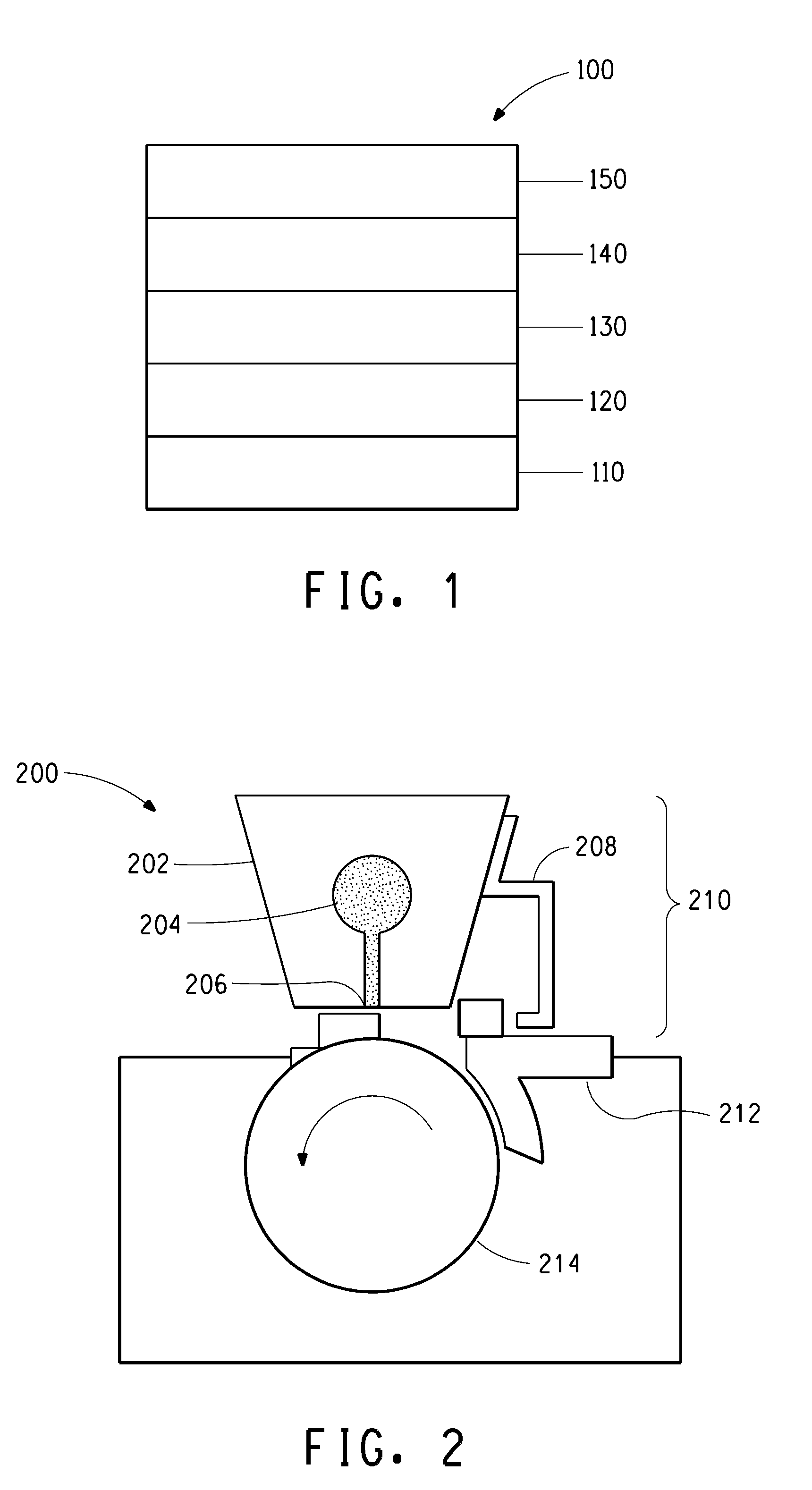Apparatus and method for solution coating thin layers
a technology of solution coating and apparatus, applied in the direction of vacuum evaporation coating, coating, cleaning using liquids, etc., can solve the problem of poor performance of electronic devices
- Summary
- Abstract
- Description
- Claims
- Application Information
AI Technical Summary
Benefits of technology
Problems solved by technology
Method used
Image
Examples
Embodiment Construction
[0032]One example of an electronic device comprising an organic light-emitting diode (“OLED”), as shown in FIG. 1 and designated 100. The device has an anode layer 110, a buffer layer 120, a photoactive layer 130, and a cathode layer 150. Adjacent to the cathode layer 150 is an optional electron-injection / transport layer 140. Between the buffer layer 120 and the photoactive layer 130, is an optional hole-injection / transport layer (not shown).
[0033]As used herein, the term “buffer layer” or “buffer material” is intended to mean electrically conductive or semiconductive materials and may have one or more functions in an organic electronic device, including but not limited to, planarization of the underlying layer, charge transport and / or charge injection properties, scavenging of impurities such as oxygen or metal ions, and other aspects to facilitate or to improve the performance of the organic electronic device. Buffer materials may be polymers, oligomers, or small molecules, and ma...
PUM
| Property | Measurement | Unit |
|---|---|---|
| slot width | aaaaa | aaaaa |
| slot width | aaaaa | aaaaa |
| distance | aaaaa | aaaaa |
Abstract
Description
Claims
Application Information
 Login to View More
Login to View More - R&D
- Intellectual Property
- Life Sciences
- Materials
- Tech Scout
- Unparalleled Data Quality
- Higher Quality Content
- 60% Fewer Hallucinations
Browse by: Latest US Patents, China's latest patents, Technical Efficacy Thesaurus, Application Domain, Technology Topic, Popular Technical Reports.
© 2025 PatSnap. All rights reserved.Legal|Privacy policy|Modern Slavery Act Transparency Statement|Sitemap|About US| Contact US: help@patsnap.com



